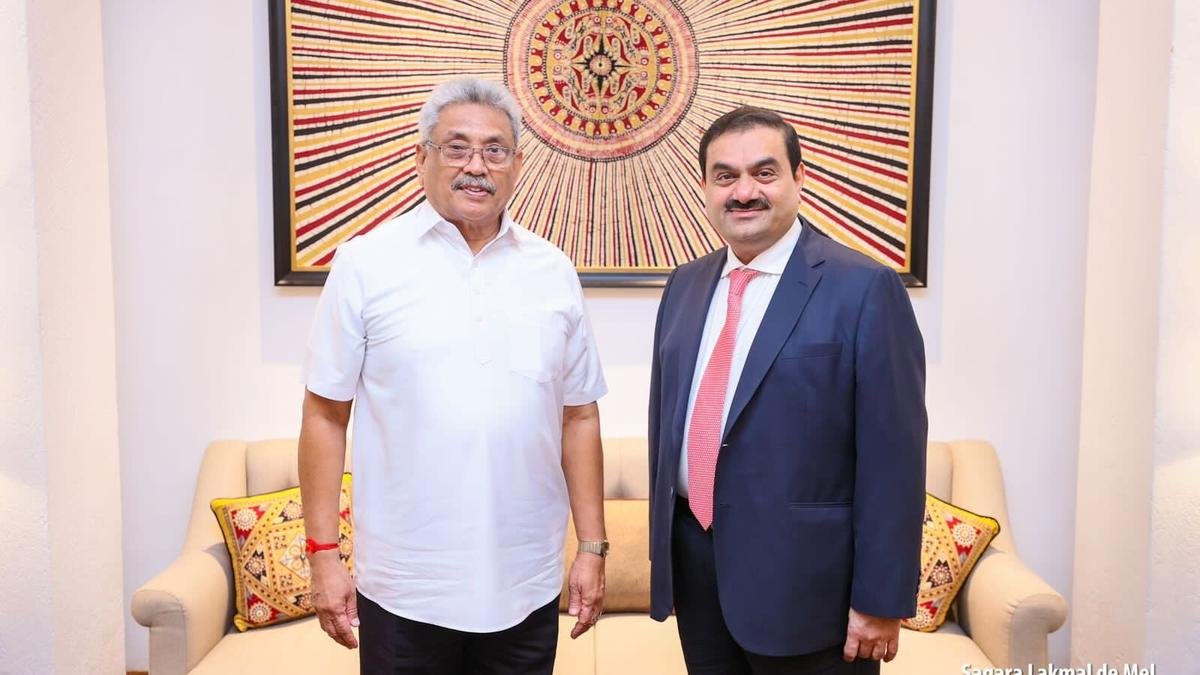Adani’s project in Sri Lanka | Explained

Former Sri Lankan President Gotabaya Rajapaksa with Adani group Chairman Gautam Adani.
The story so far: On January 24, news agency AFP reported that Sri Lanka revoked a 2024 power purchasing agreement signed with Adani Green Energy Limited. A Sri Lankan official told the agency that while the project itself had not been cancelled, the government has appointed a committee to review it. The Adani Group “categorically denied” cancellation of the project. The move drew attention, with many in Sri Lanka flagging President Anura Kumara Dissanayake’s pre-poll pledge to cancel the “corrupt” project that has been mired in controversy from the time it was approved.
What is Dissanayake’s position?
In its latest clarification, the Dissanayake government has said that there is no decision to cancel the project, but that it would renegotiate a lower rate of power purchase with the firm. Cabinet Spokesman Nalinda Jayatissa stated that the government is seeking a lower tariff that is below six cents per kilowatt-hour (kWh), instead of the formerly agreed rate of 8.26 cents per kWh.
The Minister’s announcement stood out, since the Dissanayake government in October 2024 told the Supreme Court, in an ongoing case, that it would reconsider the approval granted by the previous government to the Adani Group for the wind power project.
Furthermore, Mr. Dissanayake and his party have in the past underscored the need for a competitive bid. “We welcome foreign capital, including from the private sector. But all investments should come through a fair tender process,” Mr. Dissanayake told The Hindu in September 2024. “If the government had gone for a fair tender process, we could have got it for half the price,” he said in the interview.
What is the project?
Adani Green Energy Limited is to build a wind power plant project in the Mannar and Pooneryn towns in Sri Lanka’s northern province, investing $442 million. According to Sri Lankan authorities, the project is expected to add at least 350 MW to the island’s national grid by 2025.
In October 2021, Adani Group chairman Gautam Adani visited Colombo and called on then President Gotabaya Rajapaksa, weeks after his company sealed a deal with State-owned Sri Lanka Ports Authority (SLPA) to develop and run the strategic Colombo Port’s Western Container Terminal, which is currently proceeding. At that time, officials of the Ceylon Electricity Board (CEB) told media that the Group also “explored the possibility of investing in Sri Lanka’s wind and renewable energy sector”.
When was the project approved?
In March 2022, the CEB signed a Memorandum of Understanding with Adani Green for the wind energy project, but the development was kept under wraps. It was a report in the local Sunday Times that brought the move to light. Ever since, the project has remained in the spotlight, amid dramatic developments on the island. The Gotabaya Rajapaksa administration came under fierce attack from the Opposition, for “choosing” the Adani Group for the project without calling for competitive bids, and bypassing due process. The Group’s “back door” entry into Sri Lanka’s energy sector disrupted the country’s competitive electricity generation system, the main opposition party Samagi Jana Balawegaya contended, accusing the government of “pampering” Prime Minister Narendra Modi’s “notorious friends”.
In June 2022, Chairman of the CEB M.M.C. Ferdinando resigned, days after he told a parliamentary panel that Prime Minister Narendra Modi had “pressured” Sri Lankan President Gotabaya Rajapaksa to clear the Adani Group project. Meanwhile, Sri Lanka experienced a crushing financial meltdown, owing to an acute twin deficit problem. As a result, Mr. Gotabaya was dramatically ousted from office by a citizens’ uprising, following which former Prime Minister Ranil Wickremesinghe took his place in July 2022, even as the crisis endured.
There was renewed thrust on bringing in foreign investment in to the country to rebuild its battered economy. In February 2023, Sri Lanka’s Board of Investment approved a project to set up two wind power plants in northern Sri Lanka, with a $442 million investment from Adani Green Energy Limited. The two wind power plants — 250 MW capacity in Mannar and 100 MW in Pooneryn — were scheduled to be commissioned in two years, and the project would generate around 2,000 new jobs, the Board had announced. Despite U.S. short seller Hindenburg accusing the Adani Group of serious corruption in January that year, then Foreign Minister Ali Sabry told The Hindu that Colombo sees the Adani projects in Sri Lanka as a “government to government kind of deal” and was confident of their future. In May 2024, President Wickremesinghe’s Cabinet cleared a proposal to purchase power at $0.0826, or 8.26 cents, per kWh from Adani Green Energy.
Why are locals opposing the project?
Residents of Mannar have been raising concerns over the project’s likely impact on a crucial bird corridor in the region and on the livelihoods of local fisherfolk. Environmentalists, too, are opposing the plant. The Central Asian Flyway, an important migration route for many waterbird species around the world, runs through Mannar. Last year, multiple petitioners challenged the Adani wind power project, including on grounds of environmental impact and lack of transparency. The next hearing of the case is scheduled in March.
Published – February 07, 2025 08:30 am IST




Post Comment